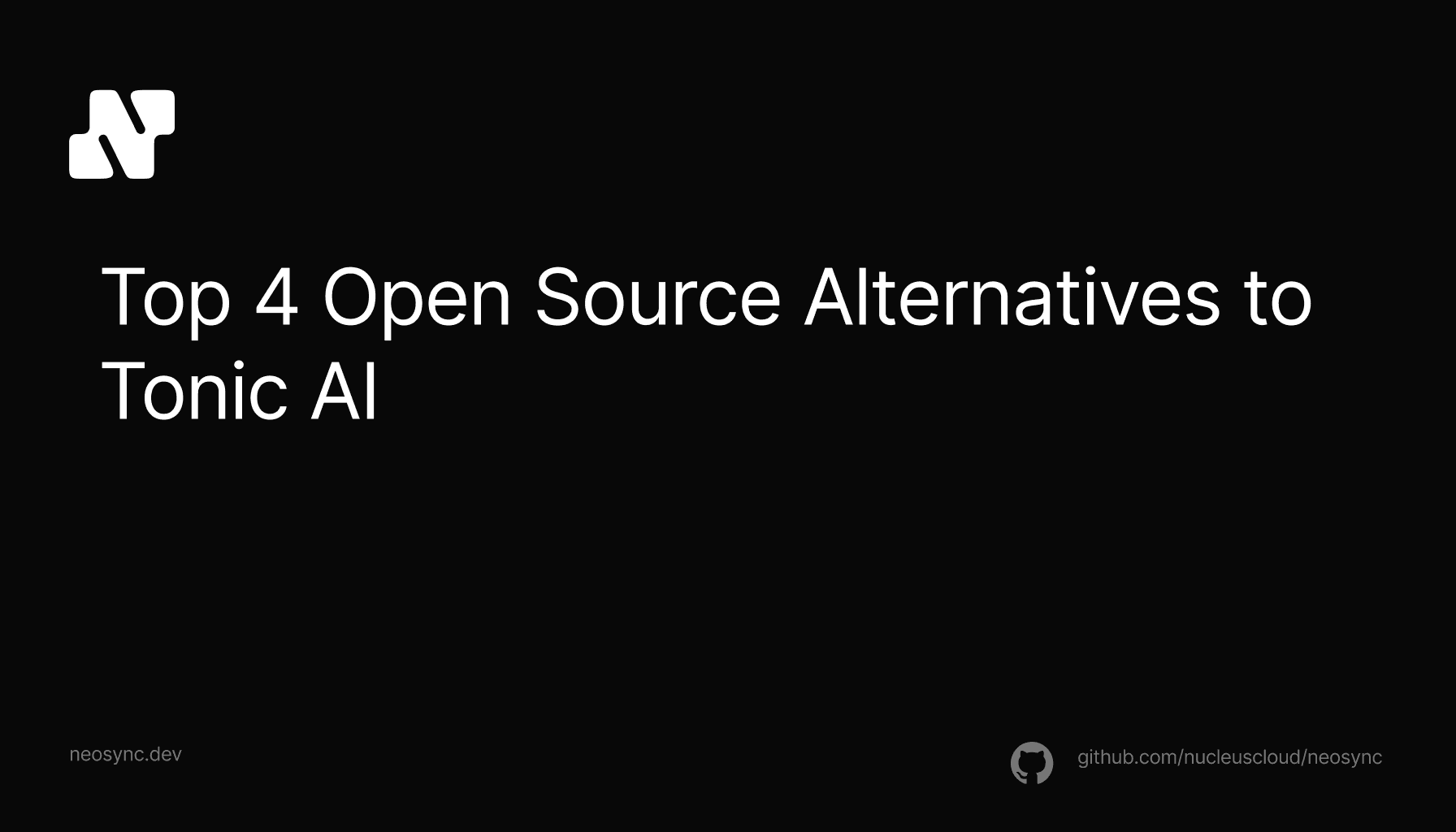
Top Open Source Alternatives to Tonic AI for Data Anonymization and Synthetic Data
Top Open Source Alternatives to Tonic AI for Data Anonymization and Synthetic Data
March 31st, 2025

For data engineers, building data anonymization pipelines isn't just about compliance – it's about creating scalable, maintainable systems that can handle petabytes of sensitive information. Let's dive into how modern data engineering practices intersect with anonymization requirements across SQL databases, NoSQL solutions, and data management systems.
Compared to traditional developers, data engineers face unique challenges when implementing anonymization at scale. Unlike application-level anonymization which is more straightforwrd, we need to think about:
Each of these are deep topics on their own that have their own performance, stability and security considerations. Particularly depending on the deployment model and the amount of data that needs to be processed.
If we were to build a production-grade anonymization pipeline, how would we do it? Let's take a shot at it.
It would typically involves several layers. First, we would want to create a staging table that will store a lot of the metadata that is generated during the anonymization process. Something like this is a start:
-- Example: Staging table for batch anonymization
CREATE TABLE staging.customer_data (
raw_id BIGINT,
processed_at TIMESTAMP,
anonymization_rule VARCHAR(50),
original_hash VARCHAR(64),
CONSTRAINT pk_staging PRIMARY KEY (raw_id)
);This staging table helps solve a few different problems. First, if the anonymization process fails halfway through, we can refer to this table to see which records were processed. The processed_at timestamp lets us identify incomplete batches. Secondly, it can serve as an audit trail to identify which anonymization_rule was applied. Third, we can use it for data validation since we're storing a hash of the original value in the original_hash column.
Now that we have our staging layer, let's move onto the data modeling for scale.
When we think about scale in reference to data engineering, we usually want to consider partitioning. Partitioning helps us break up our data into partitions for better performance and lifecycle management.
Let's put together a simple partitioning strategy:
-- Partitioned table for better performance
CREATE TABLE anonymous.customer_data (
customer_id BIGINT,
anon_data JSONB,
processing_date DATE
) PARTITION BY RANGE (processing_date);We can create these tables for each partition. This allows us to parallelize our pipeline to run faster and more efficiently, allowing each machine to handle it's optimal workload.
What if we're not using relational databases and we're using NoSQL tools. What do we do then? Well, we just need to slightly change our approach.
For document databases and NoSQL solutions, we can do something like this:
// MongoDB aggregation pipeline for anonymization
[
{
$project: {
_id: 1,
dataHash: {
$function: {
body: function (data) {
return customAnonymize(data);
},
args: ['$sensitiveData'],
lang: 'js',
},
},
},
},
];This is where the actual anonymization happens. The $function allows us to pass in a custom Javascript function and execute it. We pass in the data in the args and set the lang as js.
Expanding on this a little bit, we would want an upstream stage in our pipeline that filters the data to just what we need to anonymize. Then likely a post-processing step to validate the data as well.
We've talked about building a scrappy, anonymization pipeline in relational, SQL-based databases and NoSQL databaes. Let's talk about how to manage this at scale. There are four topics that we'll want to consider:
Rule Engine Integration
Data Quality Monitoring
Partitioning Strategies
Indexing for Anonymization
These are a mix of modularity and performance considerations that will make the system more performant, scalable and reliable.
We've covered a lot in this blog. From building a scrappy anonymization pipeline to considering how to make our solution scalable and performant.
But where is the future headed?Looking ahead, data engineering is evolving:
Automated Pipeline Generation
Real-time Anonymization
It's likely that AI will signficanty impact the data engineering workflow. Likely making it easier and faster, freeing up time for data engineers to focus on adding value.
For data engineers, anonymization isn't just a compliance checkbox – it's a fundamental aspect of building reliable, scalable data systems. Whether you're working with PostgreSQL, traditional SQL databases, or NoSQL solutions, the key is building systems that can handle growth while maintaining performance and data integrity.
The future of data engineering lies in creating intelligent, automated systems that can handle anonymization as just another transformation in our data pipelines. By focusing on scalability, performance, and maintainability from the start, we can build systems that grow with our organizations' needs while keeping sensitive data secure.

Top Open Source Alternatives to Tonic AI for Data Anonymization and Synthetic Data
March 31st, 2025

Top 4 Alternatives to Tonic AI for Data Anonymization and Synthetic Data Generation
March 25th, 2025

Nucleus Cloud Corp. 2025